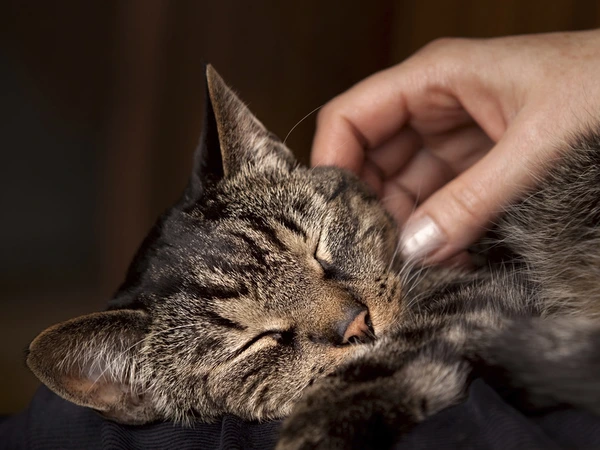Pet Psychology: Understanding Your Pet’s Emotions and Behavior
Pets are more than just companions—they are intelligent, emotional beings with complex behaviors. Whether you own a dog, cat, rabbit, or parrot, understanding your pet’s psychology is the key to building a strong, healthy bond. In this article, we’ll explore how to read your pet’s emotions, interpret their behaviors, and respond in ways that improve communication and trust.
Why Pet Psychology Matters
Understanding pet psychology is essential for:
-
Strengthening the human-animal bond
-
Preventing behavioral issues
-
Reducing stress and anxiety in pets
-
Ensuring emotional and physical well-being
-
Enhancing training and socialization
Whether you’re a new pet owner or a seasoned “pet parent,” learning the basics of pet psychology helps you become more responsive to your animal’s needs.
1. Common Pet Emotions and How They Manifest

Pets may not speak our language, but they have their own emotional vocabulary. Let’s look at some common emotions and how pets typically express them:
1.1. Happiness
Signs in dogs:
-
Tail wagging (loose, wide wag)
-
Relaxed ears and body
-
Playful behavior
-
Soft eye contact
Signs in cats:
-
Purring
-
Kneading
-
Slow blinking
-
Upright tail with a slight curve
1.2. Anxiety or Fear
Dogs may show:
-
Tucked tail
-
Cowering or trembling
-
Excessive panting or drooling
-
Hiding or trying to escape
Cats may show:
-
Flattened ears
-
Hissing or growling
-
Wide pupils
-
Hiding under furniture
1.3. Anger or Aggression
While pets rarely show aggression without cause, signs include:
-
Growling, barking, hissing
-
Lunging or biting
-
Rigid posture
-
Raised fur (in cats)
1.4. Curiosity
An alert, curious pet might:
-
Tilt its head
-
Sniff or paw at new objects
-
Explore its surroundings cautiously
Understanding these emotions helps you respond appropriately—comforting a scared pet or engaging a bored one, for example.
2. Understanding Species-Specific Behaviors
Each species (and even each breed) has distinct behavior patterns. Let’s look at how to better understand common pets:
2.1. Dogs
Dogs are pack animals. They thrive on routine, social interaction, and clear leadership.
Common behaviors and meanings:
-
Barking: Alert, excitement, warning, or boredom.
-
Chewing: A way to relieve anxiety, boredom, or teething pain.
-
Tail wagging: Not always a sign of happiness—look at tail position and speed.
-
Licking: Affection, submission, or stress relief.
2.2. Cats
Cats are more solitary by nature, but they also form strong emotional bonds.
Common behaviors:
-
Purring: Typically a sign of contentment, but can also mean stress or pain.
-
Kneading: A comforting behavior linked to kittenhood.
-
Scratching: Territory marking and claw maintenance.
-
Tail flicking: Usually signals irritation or overstimulation.
2.3. Rabbits and Small Pets
Rabbits, guinea pigs, and hamsters have their own subtle ways of communicating.
-
Thumping (rabbits): Warning signal.
-
Teeth grinding: Contentment (light) or pain (loud).
-
Hiding: Often means fear or illness.
2.4. Birds
Birds like parrots and cockatiels are extremely intelligent and emotional.
-
Feather plucking: May indicate stress or boredom.
-
Singing and talking: Sign of happiness.
-
Beak grinding: Contentment before sleep.
3. How to Read Body Language in Pets
Most pets use body language to communicate more than vocalizations. Here’s how to decode it:
3.1. Dogs
-
Ears forward: Alert and interested
-
Ears back: Submissive or scared
-
Raised hackles: Aggression or extreme excitement
-
Loose posture: Relaxed and happy
3.2. Cats
-
Tail up: Friendly greeting
-
Tail swishing: Agitation or overstimulation
-
Crouched body: Fear or preparation to flee
-
Dilated pupils: Excitement or fear
Learning to interpret this non-verbal communication can significantly improve your relationship with your pet.
4. Factors Influencing Pet Behavior
Several factors influence how pets behave, including:
4.1. Environment
-
Changes in surroundings, noise, or visitors can trigger stress.
-
Pets thrive in predictable, calm environments.
4.2. Past Experiences
-
Rescued animals may carry trauma or fear-based behaviors.
-
Positive reinforcement helps rebuild trust.
4.3. Breed and Genetics
-
Certain dog and cat breeds have higher energy or specific behavioral tendencies.
-
Understanding your pet’s breed can guide better care.
4.4. Health and Nutrition
-
Sudden behavioral changes may indicate medical issues.
-
A poor diet can cause irritability or hyperactivity.
5. Practical Tips to Support Pet Emotional Health

5.1. Create a Safe Space
-
Provide a quiet, comfortable area where your pet can retreat when overwhelmed.
5.2. Maintain Routine
-
Regular feeding, playtime, and sleep help reduce stress.
5.3. Use Positive Reinforcement
-
Reward good behavior with treats, praise, or toys.
-
Avoid punishment, which can damage trust and increase fear.
5.4. Engage Mentally and Physically
-
Daily walks, interactive toys, or puzzle feeders prevent boredom and anxiety.
5.5. Socialization
-
Gradual exposure to new people, pets, and environments helps build confidence.
6. When to Consult a Pet Behaviorist or Veterinarian
If your pet shows persistent behavioral issues—like aggression, fear, or compulsive behaviors—it’s time to consult a professional.
Warning signs to watch for:
-
Sudden aggression or withdrawal
-
Excessive vocalization
-
Destructive chewing or scratching
-
Inappropriate elimination (urinating/defecating)
A veterinarian will first rule out medical causes. If the issue is psychological, a pet behaviorist can help with structured training and behavior modification plans.
7. Myths About Pet Behavior
Let’s bust some common myths:
-
Myth: “My dog feels guilty when I scold him.”
Fact: That look is fear or appeasement, not guilt. -
Myth: “Cats are aloof and don’t care about humans.”
Fact: Cats bond deeply with owners but show affection differently. -
Myth: “Small pets don’t have emotions.”
Fact: Even small animals experience joy, fear, and affection.
Understanding these truths allows for more compassionate and informed care.
Conclusion: Building a Deeper Connection with Your Pet
Your pet may not speak your language, but they are always communicating. By learning to read their body language, emotions, and behaviors, you create a deeper, more trusting relationship. Pet psychology isn’t just for trainers or veterinarians—every pet owner can benefit from knowing how their animal thinks and feels.
A well-understood pet is a happy pet—and a happy pet means a happy home.
Read more:

